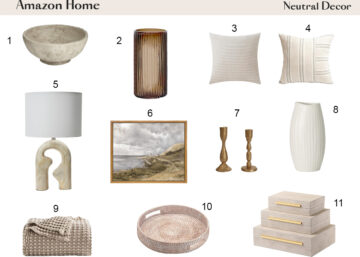Why Every Real Estate Developer Needs 3D Visualization to Win in Today’s Market
Introduction
The Transformative Impact of 3D Visualization in Real Estate
In an era where the real estate market is as dynamic as it is competitive, the advent of 3D visualization technology has emerged as a game-changer. It’s not just about selling a property anymore; it’s about selling a vision, a potential lifestyle that the buyer can aspire to. This introductory exploration delves into how 3D visualization is not merely an add-on but a necessity for real estate developers looking to distinguish themselves in today’s market.
Bridging the Imagination Gap
Traditionally, the challenge in real estate marketing was the “imagination gap.” Prospective buyers often struggled to visualize the potential of a property, whether it was yet to be constructed or needed a visionary’s touch to reveal its true potential. 3D visualization bridges this gap, transforming abstract ideas into tangible visions that captivate and inspire. It’s a tool that transcends mere aesthetic appeal, allowing for an immersive experience that traditional photographs or blueprints could never provide.
This leap from imagination to visual realization does more than enhance marketing strategies; it revolutionizes the buyer’s journey. By enabling clients to see the unseen, 3D visualization opens up a realm of possibilities seldom considered in the conventional real estate narrative. It’s not just about showing what exists but what could exist, thereby elevating the discourse around property development and marketing.
Setting a New Standard in Real Estate
The necessity of 3D visualization in today’s market cannot be overstated. It has set a new standard, transforming expectations on both ends of the real estate transaction. Buyers now expect a higher level of engagement and clarity, while developers recognize the power of 3D visualization in winning over discerning markets. It’s a tool that offers a competitive edge, allowing developers to showcase the unique attributes of their properties in unparalleled detail and clarity.
This introduction sets the stage for a deeper exploration of why every real estate developer needs to leverage 3D visualization to thrive and succeed in the modern market. It’s about embracing innovation to meet evolving expectations, ensuring that every space is not just seen but felt and experienced, even before it comes to fruition.
The Evolution of Real Estate Marketing
The Shift to Digital: A New Paradigm
Real estate marketing has undergone a significant transformation over the past decade, moving from traditional print ads and physical model homes to a digital-first approach. This shift isn’t merely about changing platforms; it represents a fundamental change in how properties are presented and consumed by the market. Digital tools have democratized access to real estate information, making it available 24/7 across the globe. However, the real revolution lies in the advent of 3D visualization technology, which has redefined the standards of property presentation and customer engagement.
The Power of Visualization: Engaging the Modern Buyer
The modern real estate buyer is information-savvy, with high expectations for content quality and accessibility. In this context, 3D visualization serves as a bridge between the digital experience and the physical reality of real estate. It offers an immersive, interactive experience that engages buyers in a way that static images or floor plans cannot. This section explores how the psychological impact of visual content influences buyer behavior, enhancing their understanding and retention of property details, and ultimately guiding their decision-making process.
Engaging Through Visual Storytelling
Visual storytelling has emerged as a potent tool in real estate marketing, with 3D visualization at its core. It allows developers to craft compelling narratives around their properties, highlighting unique features and potential lifestyle enhancements. This approach taps into the emotional aspect of buying a home, appealing to the buyer’s aspirations and dreams. By presenting a property through a well-crafted story, developers can create a memorable impression that resonates with buyers on a personal level.
Overcoming the Limitations of Traditional Marketing
Traditional real estate marketing methods, while still relevant, have limitations in conveying the full potential of a property. Photos and floor plans offer a static view, leaving much to the imagination. In contrast, 3D visualization provides a dynamic representation of properties, offering multiple perspectives and the ability to explore spaces in detail. This section will delve into the comparative advantages of 3D visualization over traditional marketing tools, demonstrating how it offers a clearer, more engaging way to showcase properties.
The Role of 3D Visualization in Digital Marketing Strategies
Incorporating 3D visualization into digital marketing strategies represents a strategic pivot towards more interactive and engaging content. It’s not just about showcasing properties; it’s about creating an experience that draws buyers in, offering them a virtual journey through their potential future home. This part of the article will explore how 3D visualization integrates with other digital marketing tools, such as social media, email marketing, and online listings, to create a cohesive, engaging, and effective marketing strategy.
The Competitive Edge of 3D Visualization
The real estate industry is marked by fierce competition and rapidly changing consumer expectations. In this landscape, 3D visualization emerges not just as a tool but as a strategic asset that gives developers and marketers a distinctive competitive edge. This section explores the multifaceted advantages of 3D visualization, underlining its role in enhancing realism, enabling pre-sale marketing through virtual staging, and ultimately securing a stronger market position.
Enhanced Realism and Immersion
The capability of 3D visualization to produce highly realistic and immersive representations of properties stands at the forefront of its competitive advantages. This realism goes beyond mere visual appeal, offering prospective buyers an authentic sense of space, texture, and dimensionality that traditional photos or even high-definition videos cannot match.
A Window into the Future
For developments still under construction, 3D renderings act as a window into the future, allowing buyers to experience the finished product in a vivid and engaging way. This ability to visualize the end result with such clarity and precision not only excites and engages potential buyers but also instills a level of confidence and trust in the developer’s vision and capabilities.
Pre-Sale Marketing with Virtual Staging
Virtual staging has revolutionized pre-sale marketing, enabling developers to market their properties effectively before completion. This strategy is particularly advantageous in a fast-paced market, where the ability to generate interest and secure commitments early can significantly impact a project’s success.
The Art of Selling Potential
Virtual staging allows for the artful presentation of a property’s potential, showcasing various design and layout possibilities that cater to diverse tastes and lifestyles. By offering a tailored experience, developers can appeal to a broader audience, maximizing the property’s appeal and marketability.
Addressing Market Demand for Customization
In today’s market, buyers are increasingly looking for properties that can be personalized to their preferences. 3D visualization offers an unparalleled platform for showcasing customizable options in real-time, allowing buyers to experiment with different finishes, layouts, and design elements.
Empowering Buyer Choices
This empowerment of buyers to make informed choices about their future homes not only enhances customer satisfaction but also positions developers as responsive and adaptable market leaders. The ability to offer personalized experiences through 3D visualization reflects a deep understanding of consumer desires, setting a new standard in customer engagement and service.
Addressing Buyer Concerns with 3D Visualization
In the complex landscape of real estate development and marketing, addressing the concerns of prospective buyers is paramount. 3D visualization not only showcases properties in their best light but also serves as a powerful tool in assuaging buyer apprehensions. This section delves into the unique capabilities of 3D visualization to address common buyer concerns, from spatial understanding to the potential for customization, highlighting how this technology can transform uncertainties into excitement and confidence.
Visualizing Potential and Overcoming Spatial Misconceptions
One of the primary challenges buyers face is visualizing the potential of a space. 2D floor plans and static images often fail to convey the true feel of a property, leading to spatial misconceptions and a lack of engagement.
Bridging the Perception Gap
3D visualization effectively bridges the perception gap between the actual space and its representation. By offering a three-dimensional, interactive view, buyers can accurately gauge the size, layout, and spatial flow of a property. This clarity is crucial in helping buyers understand how a space can accommodate their lifestyle, preferences, and needs, ultimately influencing their decision-making process.
Alleviating Design and Functionality Doubts
Beyond spatial understanding, 3D visualization plays a critical role in alleviating doubts regarding design and functionality. It allows buyers to see how different design elements come together, from the interplay of light and shadow to the harmony between architectural features and interior decor. This comprehensive view helps buyers overcome skepticism and fosters a deeper emotional connection to the property.
Showcasing Customization and Flexibility
Today’s buyers are increasingly looking for homes that can be tailored to their personal tastes and lifestyles. 3D visualization meets this demand by showcasing the flexibility and customization options available, making it a potent tool in the developer’s arsenal.
Empowering Buyers with Choice
By presenting various customization options through 3D renderings, developers empower buyers to make informed decisions about their future homes. This interactive approach allows buyers to experiment with different finishes, fixtures, and layouts, providing a clear vision of how personalized changes would look and feel. This level of engagement and personalization not only addresses buyer concerns but also enhances satisfaction and loyalty.
Enhancing Decision Confidence
The ability to visualize a property in multiple configurations significantly enhances buyers’ confidence in their decisions. Knowing that a space can be adapted to their changing needs and preferences reassures buyers that their investment is future-proof, a consideration of increasing importance in today’s dynamic market.
Mitigating Risk Perception
Investing in real estate is often one of the most significant decisions in a buyer’s life, accompanied by a high perception of risk. 3D visualization minimizes this perceived risk by providing a detailed and accurate representation of the property, allowing buyers to make decisions based on realistic expectations.
Building Trust through Transparency
The detailed accuracy of 3D renderings fosters a sense of transparency and trust between buyers and developers. By providing a true-to-life representation of a property, developers demonstrate their commitment to honesty and integrity, key factors in building long-term relationships with clients.
Streamlining Development and Design Processes
The integration of 3D visualization into the development and design processes represents a significant leap forward in efficiency, communication, and cost management. This technology not only enhances the aesthetic presentation of projects but also serves as a pivotal tool in planning, collaboration, and decision-making. This section explores how 3D visualization streamlines these processes, facilitating a smoother, more efficient path from conception to completion.
Enhancing Collaboration and Communication
Effective collaboration between architects, designers, developers, and clients is crucial for the successful completion of any real estate project. 3D visualization plays a vital role in enhancing these collaborative efforts by providing a clear, understandable, and visually engaging medium for communication.
Bridging the Understanding Gap
With the help of 3D renderings, complex architectural concepts and design elements can be easily communicated to all stakeholders, regardless of their technical expertise. This visual medium bridges the gap between professional jargon and layman’s understanding, ensuring that everyone is on the same page and reducing the likelihood of misinterpretation or oversight.
Facilitating Real-Time Feedback and Iteration
3D visualization tools allow for real-time feedback and iterative design adjustments, enabling a more dynamic and responsive design process. Stakeholders can visualize changes immediately, assess the impact of modifications, and make informed decisions swiftly. This agility not only enhances the design process but also fosters a more collaborative and inclusive environment for project development.
Efficiency and Cost Savings
One of the most compelling benefits of 3D visualization is its potential to streamline project timelines and reduce costs. By identifying and addressing design issues early in the process, developers can avoid costly mistakes and delays that often arise during construction.
Preventing Construction Rework
3D visualization allows for thorough pre-construction analysis and planning, reducing the likelihood of unforeseen issues and the need for rework. By visualizing the project in detail before breaking ground, developers can ensure that design intentions are fully understood and executable, leading to smoother construction phases and adherence to budgets and timelines.
Optimizing Resource Allocation
Through detailed 3D models, developers and project managers can better estimate materials, labor, and time requirements, optimizing resource allocation. This precision in planning contributes to more efficient project management, reducing waste and maximizing the use of available resources.
Conclusion
Embracing the Future with 3D Visualization
The exploration of 3D visualization in the real estate industry, from its impact on marketing and development processes to its role in addressing buyer concerns and streamlining design iterations, underscores a significant shift. This technology is not merely an enhancement to traditional methods but a fundamental component of modern real estate practices. As we’ve seen through diverse case studies, the adoption of 3D visualization can lead to remarkable outcomes, offering a competitive edge, fostering innovation, and enhancing buyer satisfaction.
Setting New Standards in Real Estate
The successful implementations of 3D visualization in real estate development and marketing set new benchmarks for what’s possible in this industry. These advancements are not just about selling properties but about creating immersive experiences that resonate with buyers on a deeper level. The ability to visualize the potential of a space, understand its functionality, and explore customization options empowers buyers, making the purchasing decision clearer and more compelling.
The Imperative for Industry Adoption
As we move forward, the adoption of 3D visualization technologies becomes not just advantageous but essential for staying relevant and competitive in the real estate market. For developers, architects, and marketers, investing in 3D visualization skills and tools is imperative to meeting the evolving expectations of a discerning clientele. It’s about embracing innovation to deliver value, quality, and satisfaction in every project.
Looking Ahead
The journey of integrating 3D visualization into the real estate sector is ongoing, with future advancements poised to further transform how properties are designed, marketed, and sold. As we look ahead, it’s clear that those who leverage these technologies will lead the market, offering unparalleled experiences that captivate and inspire. For Elemental Viz and its peers, the commitment to excellence through 3D visualization not only defines their success but also shapes the future of real estate.








